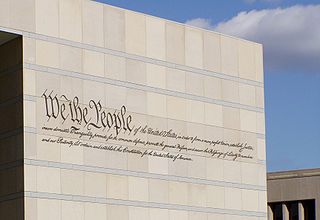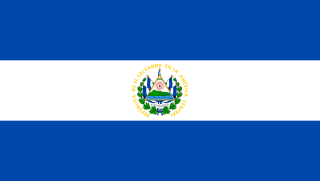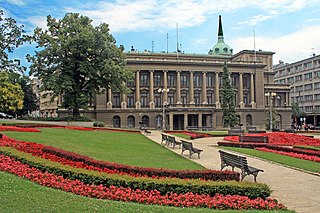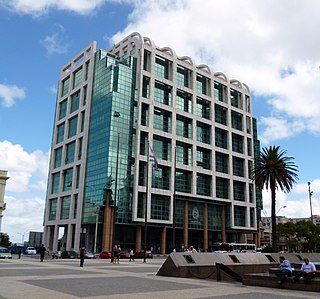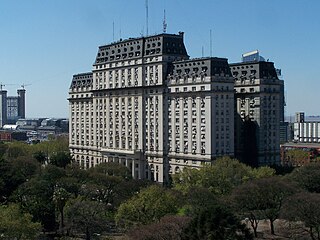| Liberty Building | |
|---|---|
| Edificio Libertad | |
 | |
| Former names | Ministry of Defense |
| General information | |
| Type | ex House of Government |
| Location | Montevideo, |
| Completed | 1985 |
| Owner | Government of Uruguay |
Liberty Building (Spanish: Edificio Libertad) served as one of two executive office buildings of the President of Uruguay (the Estévez Palace being the other).

Spanish or Castilian is a Romance language that originated in the Castile region of Spain and today has hundreds of millions of native speakers in the Americas and Spain. It is a global language and the world's second-most spoken native language, after Mandarin Chinese.

The President of Uruguay, officially known as the President of the Oriental Republic of Uruguay is the head of state and head of government of Uruguay. His or her rights are determined in the Constitution of Uruguay. Conforms with the Secretariat of the Presidency, the Council of Ministers and the director of the Office of Planning and Budget, the executive branch. In case of absence, his office is exercised by the vice president. In turn, the president of the republic is the commander in chief of the armed forces.

The Estévez Palace is a building situated in Plaza Independencia, Montevideo, Uruguay, designed in a combination of Doric and Colonial styles by Manoel de Castel in 1873. It has served as the working place of the President of Uruguay and has been eventually converted to a museum, housing artifacts and mementos of the Uruguayan presidency and its office holders.
It was built in the 1970s during the military government for the Ministry of Defense, but in 1985, president Julio María Sanguinetti decided to move the presidential office to that building. Its surrounding area was turned into a park with a permanent exhibit of modern sculptures, which was inaugurated in 1996. [1]

Julio María Sanguinetti Coirolo is a Uruguayan politician, lawyer and journalist, who served as President of Uruguay for the Partido Colorado.
In 2006, President Tabaré Vázquez announced that he would be moving the presidential offices to the Executive Tower and turn the Liberty Building into a hospital. [2] It currently houses assistance services of the Ministry of Public Health.

Tabaré Ramón Vázquez Rosas is a Uruguayan politician serving as the 41st and current President of Uruguay since 2015. He previously served as President from 2005 to 2010 as the 39th officeholder. A physician (oncologist), he is a member of the leftist Broad Front coalition.

A hospital is a health care institution providing patient treatment with specialized medical and nursing staff and medical equipment. The best-known type of hospital is the general hospital, which typically has an emergency department to treat urgent health problems ranging from fire and accident victims to a sudden illness. A district hospital typically is the major health care facility in its region, with a large number of beds for intensive care and additional beds for patients who need long-term care. Specialized hospitals include trauma centers, rehabilitation hospitals, children's hospitals, seniors' (geriatric) hospitals, and hospitals for dealing with specific medical needs such as psychiatric treatment and certain disease categories. Specialized hospitals can help reduce health care costs compared to general hospitals. Hospitals are classified as general, specialty, or government depending on the sources of income received.


